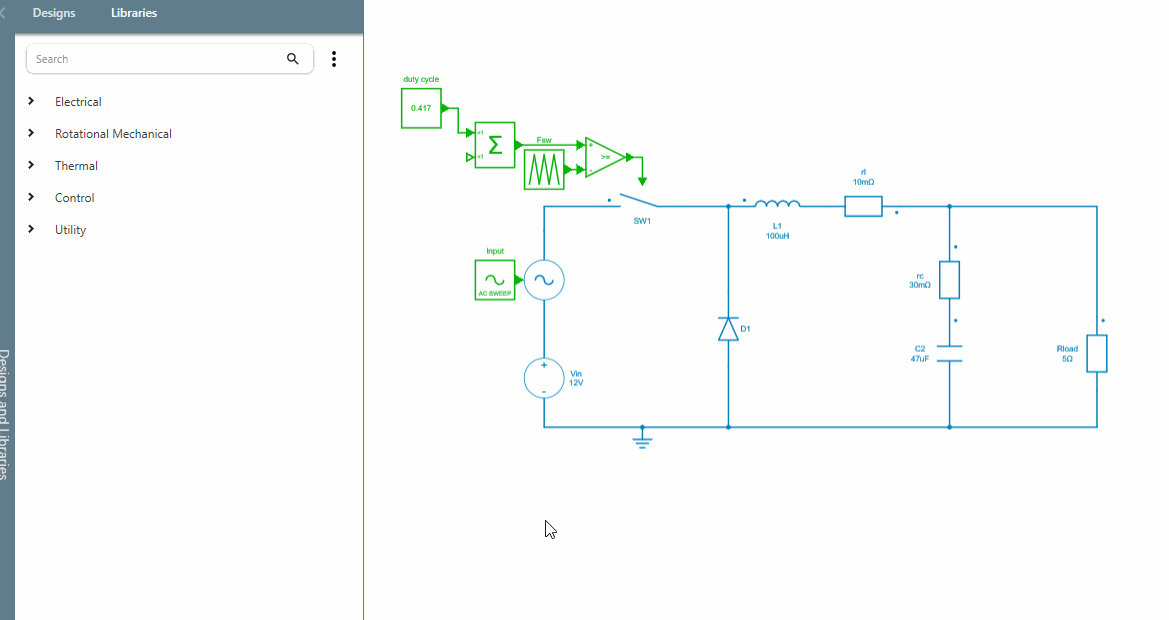AC sweep
The AC sweep feature is a frequency analysis of a periodic system. It uses the steady-state determination algorithm to compute the transfer function of a periodic system at different frequencies of a user-defined frequency sweep range. For each frequency, the following steps are performed:
- apply the (sinusoidal) AC sweep perturbation (see figure below to add this component in the circuit) to the periodic system,
- determine the steady-state operation of this perturbed system,
- compute the system response at this perturbation frequency.

The perturbation frequencies are defined by specifying:
- the frequency sweep range with the start and the end-frequency,
- the sweep type: linear or logarithmic,
- the start and the end-magnitude of the sinusoidal perturbation,
- the number of points within this range.

Once executed, the transfer function between the perturbation signal S_p and the selected output variable S_o is then available in the Results tab. The transfer function is computed such as: 20 \log\left( S_o / S_p\right)

Important
The AC analysis on a range with low or very low frequencies should be carefully considered with the minimum time step which is set: it can lead to a very high number of points per period to be simulated for the steady state detection. For example, an analysis @10Hz with a minimum time step of 1e-10s could lead to an analysis of 1e9 points.
Python API
The AC Sweep is entirely accessible from the Python API to automate transfer function analysis.
1 2 3 4 5 6 7 8 9 10 11 12 13 14 15 16 17 18 19 20 21 22 23 | |